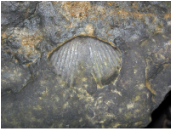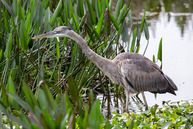4th Grade Science
Utah Core Science Standards
Standard 1: Students will understand that water changes state as it moves through the water cycle.
Describe the relationship between heat energy, evaporation and condensation of water on Earth. Technology Resources for S1 Objective 1
Technology Resources for S1 Objective 2
|
ISTE Standards Addressed:
Technology Links for Teaching standard 1 via Utah Education Network (UEN).
|

Standard 2- Students will understand that the elements of weather can be observed, measured, and recorded to make predictions and determine simple weather patterns.
Observe, measure, and record the basic elements of weather. Technology Resources for S2 Objective 1
Technology Resources for S2 Objective 2
Technology Resources for S2 Objective 3
|
ISTE Standards AddressedTechnology Resources for Teaching Standard 2 via Utah Education Network (UEN)
|

Standard 3- Students will understand the basic properties of rocks, the processes involved in the formation of soils, and the needs of plants provided by soil.
Identify basic properties of minerals and rocks. Technology Resources for S3 Objective 1
Technology Resources for S3 Objective 2
Technology Resources for S3 Objective 3
|
ISTE Standards AddressedTechnology Resources for Teaching Standard 3 via Utah Education Network (UEN)
|

Standard 4- Students will understand how fossils are formed, where they may be found in Utah, and how they can be used to make inferences.
Describe Utah fossils and explain how they were formed. Technology Resources for S4 Objective 1
Technology Resources for S4 Objective 2
|
ISTE Standards AddressedTechnology Resources for Teaching Standard 4 via Utah Education Network (UEN)
|

Standard 5- Students will understand the physical characteristics of Utah's wetlands, forests, and deserts and identify common organisms for each environment.
Describe the physical characteristics of Utah's wetlands, forests, and deserts. Technology Resources for S5 Objective 1
Technology Resources for S5 Objective 2
Technology Resources for S5 Objective 3
Technology Resources for S5 Objective 4
|
ISTE Standards AddressedTechnology Resources for Teaching Standard 5 via Utah Education Network (UEN)
|

